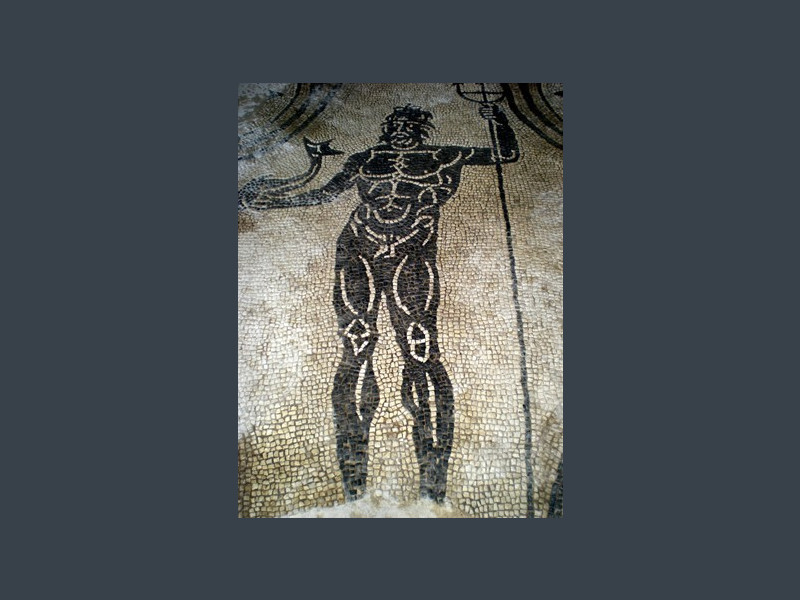Terme di Vasto (antica Histonium)
Roman Baths of Vasto, ancient Histonium, are the largest in the entire Adriatic area of central-southern Italy, with an area of around 250 m². The complex dates back to the 2nd century AC, although the remains of Roman brick emerged only in the excavations of 1973-1974, and consists of thirteen rooms, probably originally divided by a colonnade, which follow the natural slope of the ground, from Church of Sant'Antonio to Church of the Madonna delle Grazie. Mosaic of Neptune is the largest with its 170 m², although a part of it runs under the sacristy of St. Anthony. Unearthed in 1997, it presents a decoration with intertwining stylized plant elements that define thirteen quatrefoil-shaped zones: in the central area stands out the figure of Neptune holding a trident in one hand and a dolphin in the other; in the other fields it is possible to admire three Nereids, the tail of a dolphin, three tritons and a cupid. The pool of Mosaico del Nettuno was most likely the frigidarium, that is, it contained cold water. In Marine Mosaic there are two central crosses depicting two sea horses and two fishes, on the sides there are four ellipses with dolphins and polyps. Not far from the mosaic, a short pointed arch contained the praefurnium that heated the pool, therefore intended as a caldarium, or hot water pool. The technique of the two-tone color matches the mosaics: the use of white and ivory background tiles, combined with black tesserae, highlights anatomical details of the figures. Roman Baths are open regularly to the public during the summer.

